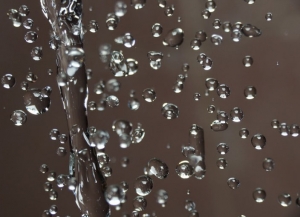Getting Hard Water Under Control
According to the USGS approximately 80% of homes in the United States are affected by hard water. While you may think that such a common issue could not be particularly problematic, hard water can have a number of unpleasant effects in both the short and long-term. 
What’s the Big Deal About Hard Water?
Hard water can affect the home in a number of adverse ways. The first short-term effect you may notice is that soaps and detergents are not as effective. You may find that these products fail to foam up properly, with clothes, dishes and even skin not feeling properly cleaned after washing. You may notice spotting and marks on dishes, dry skin developing and clothes looking gray and grubby. While these effects are frustrating, many consumers may attribute these issues to poor quality cleaning and skin care products.
The more serious implications of hard water are actually occur over the long-term and are often hidden from sight. This is because mineral scale accumulating and being deposited in appliances and pipes. The scale build-up cannot only cause blockages in pipes and increase the risk of flooding, but can also compromise the energy efficiency of your appliances. As the scale builds up around the heating element in washing machines, dishwashers and water heaters, the appliances need to use more energy to heat the water. This can increase energy bills and compromise the lifespan of the appliance.
Controlling Your Hard Water:
Installing a water softener system can have an immediate effect to control hard water issues in the home. There are a variety of systems available, from basic models for less than $1,000 to more extensive multi-function units, which can offer a whole house solution for $6,000 or more. The price of the system and the operating costs are directly affected by how the softener is controlled. The most cost effective systems use electronic timers and clocks to control the system. This allows for the unit to be automatically regenerated at preset times and days, based on the estimated average usage.
There are two factors to be considered when choosing a timer control method. Firstly if the water usage increases, the timer will not allow the unit to compensate for this increase. Secondly, when water usage falls below the anticipated level, more than the required level of salt will be used.
Another alternative method of control is a DIR device. Demand Initiated Regeneration tends to be more costly, but these devices can offer savings in the long-term, over the lifetime of the unit. A DIR control senses when the resin requires rinsing, either by calculating usage or an electronic sensor. This means that the salt is only recharged when necessary, saving salt and compensating for any fluctuations in water usage. These devices may even include a remote monitor to alert the homeowner of maintenance or salt regeneration, with some of the most sophisticated systems transmitting the operational status of the device using a phone line for a remote diagnosis.
About The Author:
Greg Scott is President of Valparaiso based Miracle/EcoWater Systems, the premier water conditioning company in Northwest Indiana serving the Lake, Porter and LaPorte County areas. A 3rd generation water treatment professional, Greg grew up in the family owned business started by his grandfather in the late fifties. He has made water treatment his life and under his direction and high-standards, the company’s water treatment experience, knowledge, and products are unrivaled in region.
